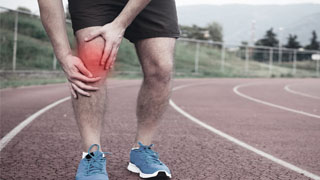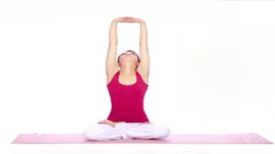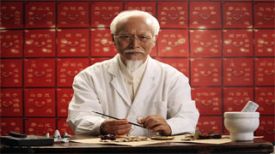
Patellar chondromalacia occurs when the cartilage in the posterior part of the knee bone begins to soften and decompose. This type of damage can cause friction between the knee bones to form the leg bones of the knee joint, leading to increased pain with movement. Patellar chondromalacia is commonly referred to as running knee.
Smith BE, Self J, Sack D, and others. Incidence rate and prevalence of patellofemoral pain: a systematic review and meta-analysis. Public Science Library No.1. 2018; 13 (1): e0190892. doi:10.1371/journal.pone.0190892
Knee injuries, overuse of the knee joint, and imbalanced or poorly aligned knee muscles often lead to the occurrence of patellar chondromalacia. If you have knee pain, please consult your healthcare provider or physical therapist for evaluation.
This article explores some exercises that can be done when suffering from patellar chondromalacia. It also focuses on which activities you should avoid and some other strategies that can help alleviate your pain.
Raise straight legs
Raising straight legs helps to enhance the strength of the hip flexors and quadriceps, thereby lifting the leg while stabilizing the knee. The quadriceps are a group of four different muscles that stretch the leg at the knee joint and help stabilize the knee bones.
To perform this exercise:
Lying supine, with one leg bent and the other leg extended.
Stretch and contract the quadriceps muscle of the leg to tighten the leg and lock the knee joint.
While maintaining this contraction, lift the leg while keeping it straight at all times.
Slowly lower your legs while maintaining quadriceps contraction and keeping your knees straight.
Repeat 10-15 times and then rest.
Repeat three sets, 10-15 times for each leg.
To increase strength, increase ankle weight around the ankle to enhance the activation of the quadriceps.
Hip flexor muscle and injury
Lie on your side and raise your legs
Lying sideways and lifting legs can help strengthen the gluteus medius and stabilize the knees. The gluteus medius is a muscle on both sides of the buttocks that can move the leg away from the body and stabilize the hip and knee joints. If the gluteus medius muscle is weak, the femur (the thigh bone that forms the hip joint and the upper half of the knee joint) may be misaligned, causing greater pressure on the knee joint.
To perform this exercise:
Lie on your side, with your hips, knees, and ankles stacked together, keeping your upper leg straight and your lower leg bent.
Contraction of the quadriceps muscle in the upper leg to tighten the leg and lock the knee joint.
While maintaining this contraction, slowly lift the upper leg while keeping the leg straight. Do not let your body or hips roll backwards.
Keep your legs in the highest position for one second.
Slowly lower your legs while maintaining quadriceps contraction and keeping your knees straight.
Repeat 10-15 times and then rest.
Repeat three sets, 10-15 times for each leg.
To increase strength, increase ankle weight around the ankle to enhance the activation of the quadriceps and gluteus medius muscles.
Avoid using strong force to press the knee bone against the femur, such as squats and lunges that involve deep bending of the knee, as well as high impact activities such as running and jumping, until the pain subsides and the muscle strength around the buttocks increases. The knee joint has been improved to stabilize the knee during movement.
Clamshell
Clam shell exercises help strengthen the gluteus medius and deep external rotation muscles of the hip joint. When these muscles become weak, the femur may become misaligned, putting greater pressure on the knee joint.
To perform this exercise:
Lie on your side, with your hips, knees, and ankles stacked together, and your knees bent.
Keep your ankles together and slowly lift your knees. Do not let your body or hips roll backwards.
Keep your legs in the highest position for one second.
Lower to the starting position and repeat 10-15 times.
Repeat in three groups, 10-15 times for each group.
To increase strength, add resistance bands around the thighs above the knees to enhance the activation of the gluteal muscles.
Hip extension and leg lifting
Hip extension and leg lifting help enhance the strength of the gluteal and quadriceps muscles, thereby extending the hip joint while stabilizing the knee. The quadriceps helps stabilize the knee bones, while the gluteal muscles provide overall strength and stability to the entire leg. If the gluteal muscles are weak, the knee joint will bear greater pressure and repetitive force.
To perform this exercise:
Lie prone with legs extended.
Shrink the quadriceps muscle of one leg to tighten the leg and lock the knee joint.
While maintaining this contraction, lift the leg while keeping it straight at all times. Use your hips to isolate movement and avoid arching your lower back.
Slowly lower your legs while maintaining quadriceps contraction and keeping your knees straight.
Repeat 10-15 times and then rest.
Repeat in three groups, 10-15 times for each group.
To increase strength, increase ankle weight around the ankle to enhance the activity of the quadriceps and gluteal muscles.
Half squat
Although open chain exercises that allow for free leg movement are often used in the early stages of rehabilitation, closed chain exercises including placing the foot on the ground and improving gluteal muscles can be safely performed when the stimulation behind the knee bone is reduced and the quadriceps muscle is activated.
Half squatting within a range of motion where the knee is bent 45 degrees can help enhance the strength of the quadriceps, thereby stabilizing the knee and supporting the leg during weight-bearing without putting too much pressure on the knee bones.
To perform this exercise:
Start from the standing position in front of the chair.
Push your hips back, bend your knees, and slowly lower to a squatting position. Do not let your knees move forward beyond your toes, or let your knees sink into each other.
Stop about halfway above the chair seat and keep your knees bent at a 45 degree angle.
Maintain this squatting position for one second, then stand up and return to the starting position.
Repeat 10-15 times and then rest.
Repeat in three groups, 10-15 times for each group.
To increase intensity, as long as you don't feel knee pain, increase the range of motion to a complete squat. Add resistance bands around the thighs above the knees to help maintain good alignment between the hips and knees and increase activation of the gluteal muscles.
Safe exercise for cartilage softening pain
When suffering from patellar chondromalacia, as long as one persists in activities that do not put any pressure on the knee, they can remain active. Low impact activities are the best, such as:
Walking on a flat surface
Yoga or Pilates (movements that avoid putting pressure on the knees)
Swimming or aerobic exercise in water
Kayaking or rowing
What should be avoided
Specific activities may put pressure on the knee joint and cause cartilage softening pain. This includes the following:
Running or jogging
Climbing stairs or mountain climbing
Knee bending, squatting or kneeling
Step aerobics
Other helpful things
Physical therapy is the primary recommended treatment for chondromalacia, but other strategies can help alleviate pain in the short term. These include:
Non steroidal anti-inflammatory drugs: over-the-counter pain relievers such as Advil (ibuprofen) can help alleviate pain and inflammation
RICE: Resting, applying ice, applying pressure, and lifting can help reduce swelling and inflammation
Support: Kneepads can help provide pressure and support for the knee during activities.
Glucosamine/chondroitin sulfate: Some studies provide limited evidence that these joint supplements may help alleviate pain
S-adenosylmethionine (SAMe): This compound naturally exists in your body. Some studies have found that it can alleviate joint pain.
Mitsui Y,Satou M,Shimizu S,Mitsui H,Matsumoto H。 Clinical study on the efficacy of yeast containing S-adenosylmethionine in treating knee osteoarthritis. Pace Medical Universe. 2017; 6: 36-9. doi:10.1016/j.pmu.2017.05.002
summary
When the cartilage behind the knee bone ruptures, patellar chondromalacia occurs. Some exercises, such as leg lifts, clamshell exercises, and squats, can help enhance knee strength and reduce pain.
If you suffer from patellar chondromalacia, you should avoid activities that put pressure on your knees and stick to low-intensity exercises such as swimming or walking on flat surfaces.
Patellar chondromalacia is usually caused by repetitive and high-intensity activities that exert pressure on the knee joint. This situation occurs because the muscles around the knees and hips are not strong enough to support the needs of movement.
Strengthening the muscles that stabilize the knees and hips can help support the correct alignment of joint and muscle activation patterns to prevent increased pressure on the knees and knee bones. This can help you resume activities and exercise painlessly.


